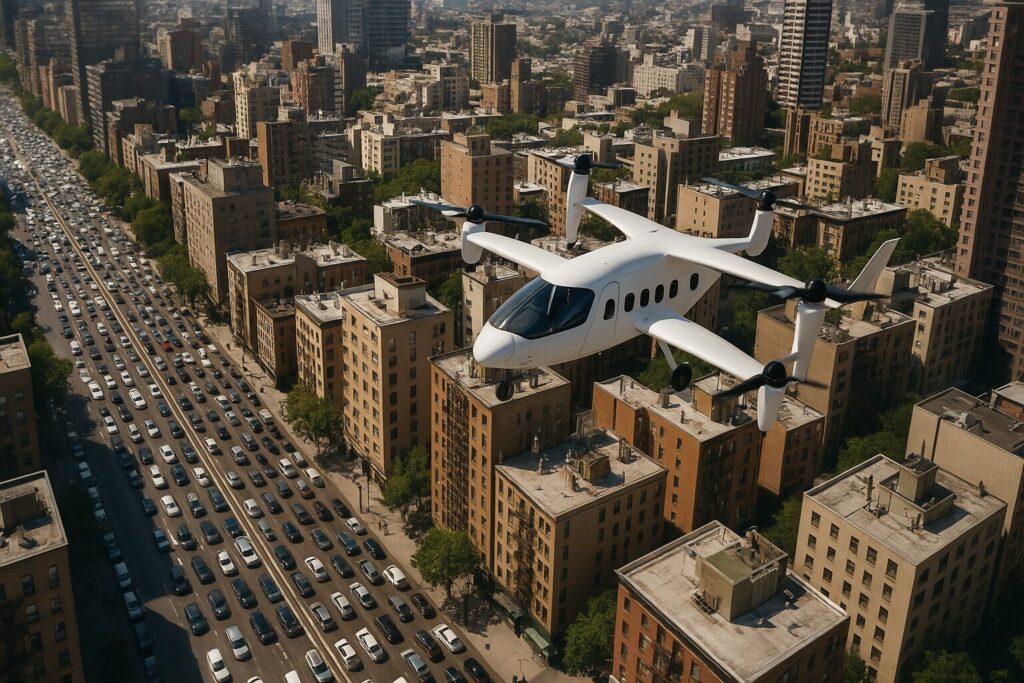As cities grow denser and more interconnected, the pressure on transport systems increases. Roads are congested. Rail expansion is costly. Yet above us lies an underutilised resource—the urban sky.
The report Morgondagens Flyg describes how Sweden can unlock this vertical space by integrating electric vertical take-off and landing aircraft (eVTOLs) and drones into everyday mobility.
This isn’t science fiction. It’s a fast-approaching reality. eVTOLs are quiet, electric, and designed for short hops between urban centres, suburbs, and transport hubs. Drones already deliver medicine and inspect infrastructure—and their role is expanding rapidly. Together, these technologies create a new mobility layer that operates above the street level but below conventional airspace, often referred to as ”Very Low-Level Airspace” (VLL).
To enable this development, cities need more than aircraft—they need airspace design, digital infrastructure, and ground infrastructure. This includes vertiports (landing sites for eVTOLs), drone corridors, charging stations, and real-time air traffic management. The European U-space regulatory framework (effective since January 2023) sets the foundation for managing these low-level operations, with Sweden preparing its first U-space implementations in coordination with LFV and Transportstyrelsen.
Municipalities, however, currently lack clear mandates to plan and regulate low-altitude airspace. Morgondagens Flyg calls for updated spatial planning tools and legal frameworks so that cities can include aerial mobility in their infrastructure strategies—just like roads and railways. As of 2025, several Swedish municipalities (including Sundsvall and Norrköping) are participating in regulatory testbeds to explore how U-space can be embedded into urban development.
Equally important is public engagement. Integrating the third dimension into urban mobility must be done with attention to noise levels, privacy concerns, visual impact, and equitable access. Guidelines from EASA (European Union Aviation Safety Agency) now include public acceptance as a key criterion in certifying Urban Air Mobility (UAM) operations.
In the right regulatory and infrastructural conditions, advanced air mobility can offer faster, cleaner, and more flexible transport for people and goods—especially in cities facing chronic congestion or limited expansion space.
As Morgondagens Flyg puts it: the sky is not the limit. It’s the opportunity.
Is your city ready to take off?

This article builds on the report “Morgondagens Flyg” (The Aviation of Tomorrow), created by Transportföretagen and Aero EDIH.















